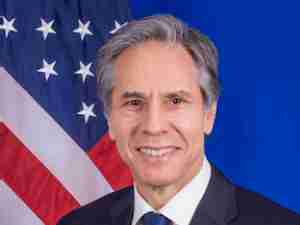By Peter A. Buxbaum, AJOT
The future of freight movement in the United States is receiving ever-increasing attention in the public policy arena. Evidence of this came last month in Washington, when a national summit of major US trade corridors was convened. Topping the meeting agenda was the effort to secure an ongoing stream of federal funding for transportation projects of national significance. Advocates have reason for some optimism.
The conference was organized by the Coalition for America's Gateways and Trade Corridors (CAGTC), the American Association of State Highway & Transportation Officials (AASHTO), and the American Road & Transportation Builders Association (ARTBA). Participants included representatives of federal and state transportation agencies, port authorities, and interested private companies who met to identify common interests and to work on recommendations for financing road, rail, and multi-use Corridors projects for the National Surface Transportation Policy and Revenue Study Commission. Rep. James L. Oberstar (D-MN), the new chairman of the House Transportation and Infrastructure Committee, has also asked CAGTC for its recommendations for transportation finance, according to the organization's executive director, Leslie Blakey.
Most participants found common ground in their thirst for federal and other sources of funding to solve transportation problems. "Our state transportation departments are committed to working with the Congress to find solutions to the projected growth in freight," said AASHTO executive director John Horsley. "It is critical that our solution be more than a collection of projects that relocate bottlenecks. Freight needs must underpin a national, multimodal, interconnected vision."
Horsley projected that there will be a 114% growth in truck traffic and 63% growth in rail volume by 2035. CAGTC numbers indicate that foreign trade accounts for one-third of the US Gross Domestic Product and that world output is predicted to increase 33% over the next ten years. A 2005 study demonstrated that congestion caused 3.7 billion hours of travel delay and 2.3 billion gallons on wasted fuel, for total costs of $63 billion that year.
"There seems to be a consensus emerging around the need for a new national policy,' said Sharon Neely, Transportation Director for Alameda Corridor East, the rail connection linking Southern California ports with inland distribution centers. 'There also seems to be agreement around the need to identify additional funding that may very well not rely on traditional sources, which is dedicated to freight projects and explicitly firewalled from alternate uses by legislation."
Non-traditional sources include applying Customs and cargo fees to multi-state transportation projects. CAGTC has been pushing for a Freight Trust Fund that would incorporate those and other funding mechanisms to fund infrastructure projects and which would increase revenue as freight traffic rises.
Officials of the US Department of Transportation expressed interest in the trust fund, especially in connection with its Southern California Congestion Initiative, according to Blakey. CAGTC representatives recently met with DOT officials about the project. Those officials were 'very interested in CAGTC's Freight Trust Fund concept and believe such a concept will receive ample discussion in the Congress,' she said.
DOT expects to have a finalized Memorandum of Understanding for the project after some additional work with the Environmental Protection Agency. 'DOT's goal is to develop a document that defines the congestion problem facing Southern California and to propose a broad policy approach that is reflected in a list of projects that all parties agree to support,' said Blakey.
Ballot initiatives
CAGTC also takes encouragement from the November 2006 elections, during which voters cast their ballots on thirty state and local ballot initiatives designed to generate funds for tran








